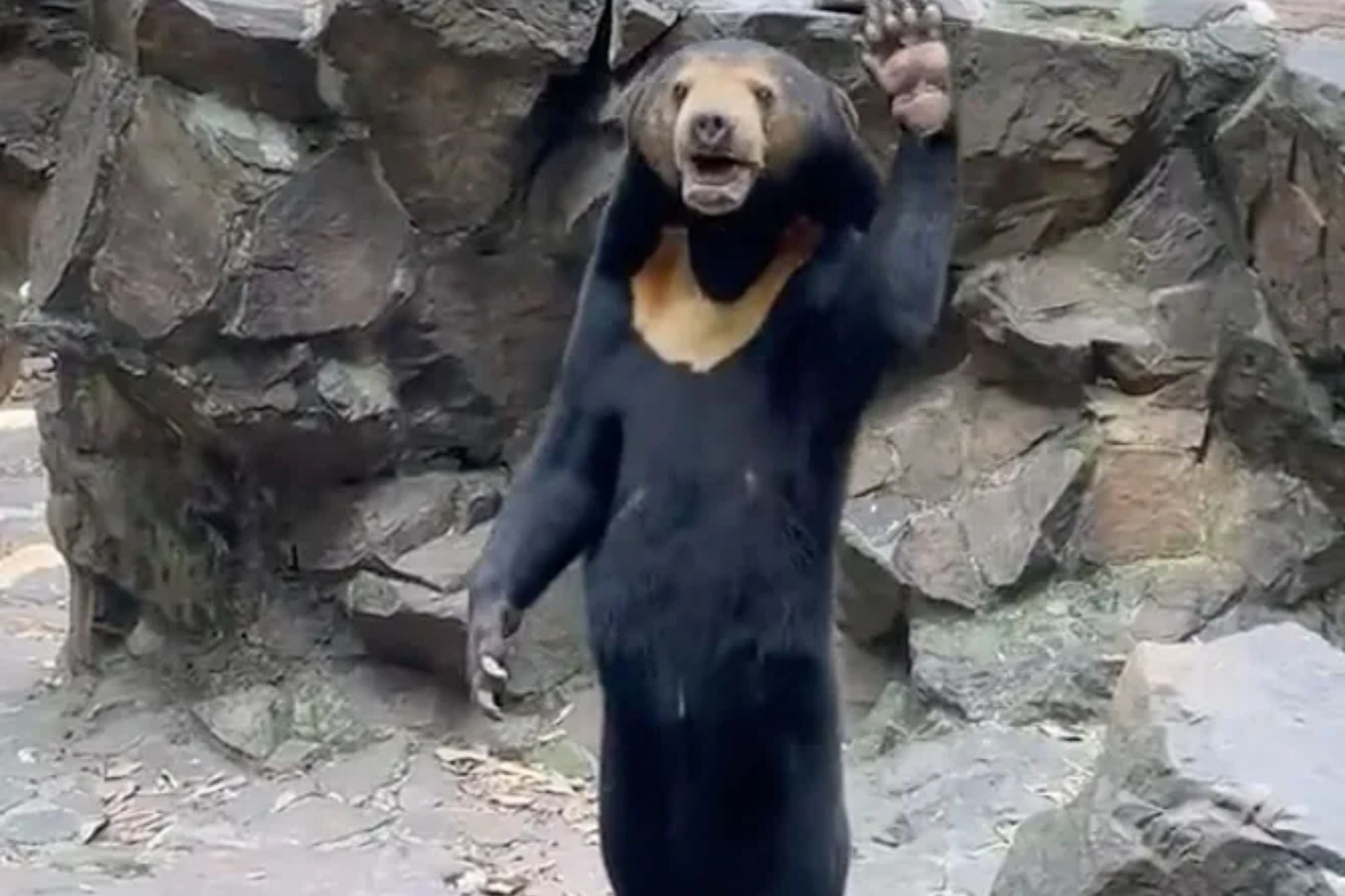There is a lesson we all need to learn from the viral sun bear video
When a video of a bear standing on its hind legs went viral, the internet exploded with theories and rumours. Aaron Whitnall explains why the confusion arose, and how people’s excitement over unknnown species can be harnessed to protect animals

In our fast-paced lives, where we are becoming more dependent on technology to entertain us and educate us than the actual world around us, it’s easy to forget that we share this planet with a vast array of remarkable wildlife species. Urban lifestyles in particular have distanced us from the wild world around us, leaving us shocked and surprised when animals act in ways we don’t quite understand.
The recent viral video of a sun bear standing on its hind legs at a zoo in China has provided a perfect example of this, as online viewers who are unfamiliar with the species have shared conspiracy theories that the bear is actually a human worker in a costume.
Aside from the most avid wildlife lovers, this beautiful species has not been able to get much of the bear family spotlight. To everyone in the wildlife profession, sun bears were generally known as the “forgotten” bear, often losing out to their larger and more mainstream cousins like the polar bear and the panda.
Not this week though. This is the little sun bear’s moment to steal that spotlight, and it’s been great to watch the world become captivated by this truly amazing animal species. Sun bears are the smallest members of the bear family, and can be found across Southeast Asia. They’re a threatened species, with both subspecies – the Malayan sun bear and Bornean sun bear – being listed as “vulnerable” on the International Union of Conservation and Nature (IUCN) red list. Their numbers in the wild are unknown, but we do know they are under threat from habitat destruction, the pet trade, and the bear bile trade across Asia.
As we’ve expanded our urban jungles, we’ve relegated actual jungles to something that seems worlds away, despite in many parts of the world this not actually being the case. Singapore, Brazil, India, numerous African countries and Britain are all places where animals and humans live side by side. However, due to our day-to-day existence revolving around screens and manufactured environments, we’ve reduced our interactions with the wild world to fleeting glimpses on nature documentaries.

In my experience, even at my family’s wildlife charities – Paradise Wildlife Park in Hertfordshire and The Big Cat Sanctuary in Kent – it’s amazing to meet people who don’t even believe certain species exist, despite their status in wildlife-related pop culture. Or the baffling confusion between species that are so iconic you can’t believe they’d be mistaken for another animal. For example, stand next to the lion habitat at Paradise and you’ll be amazed how many people you hear mistake them for tigers.

Is this reaction rooted in ignorance? Perhaps; but in my opinion it appears in most cases to be unintentional ignorance. It’s easy to see why most people don’t learn the basics – even just the names and physical appearance of the species we share the planet with – beyond the absolute most famous species. Most people don’t need to know the name of animal they’re likely to never seen in person.
However, it is not all bad. The ubiquity of things like cameras and streaming allow us an opportunity to highlight the natural world, the species’ who call home, and the behaviours that they display in a way we would have never been able to in the past. Today everyone is filming or taking photos, and with that comes opportunities to see more and more of what mysteries or previously unseen discoveries there were in the past.

In the case of the sun bear, I hope that its newfound online fame will be catalyst for a long-awaited intervention that will help keep them from slipping into the endangered species category. By channelling people’s interest in their behaviour, the hope is that people will want to learn more about them and ultimately want to help keep them on this planet to live alongside us in their jungle homes long into the future.
Aaron Whitnall is a wildlife adventurer, conservationist and television presenter. He is recognized for his work with a wide variety of animal species and his efforts in educating the younger generation. In addition to hosting two children’s wildlife TV series, “One Zoo Three” and “OZT Goes Wild in Britain”, Aaron works between his family’s two wildlife charities: Paradise Wildlife Park/Hertfordshire Zoo and The Big Cat Sanctuary.
Join our commenting forum
Join thought-provoking conversations, follow other Independent readers and see their replies
Comments


Bookmark popover
Removed from bookmarks